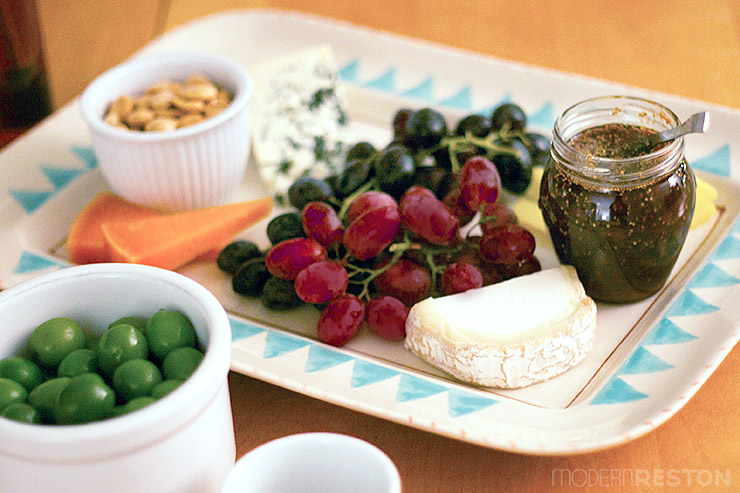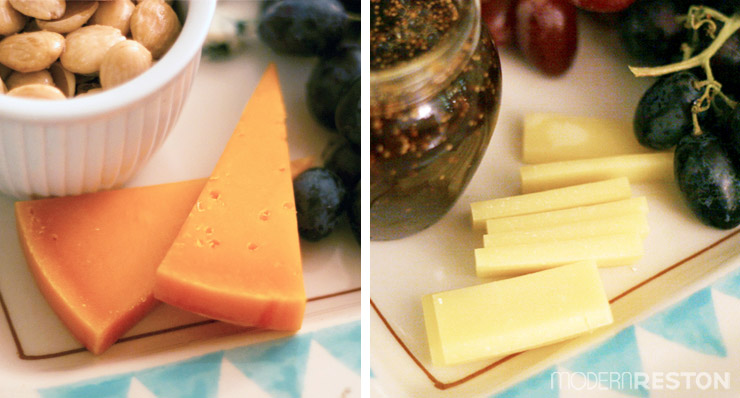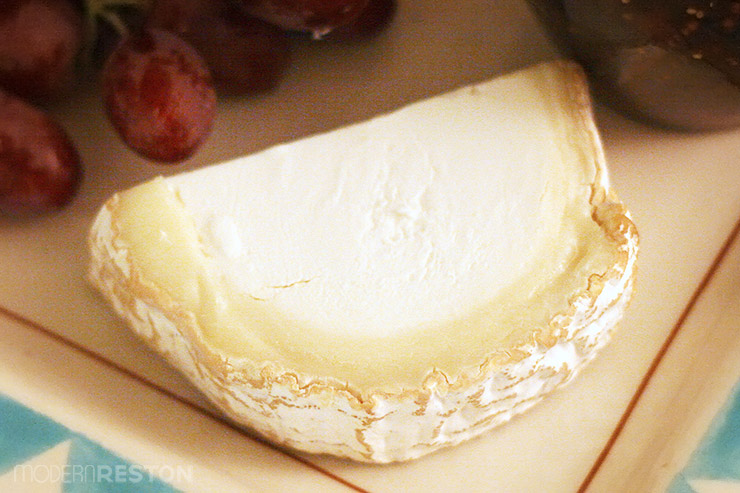This week’s installment in our holiday food series — CHEESE!
The holiday decorations are up and a steady stream of friends and family is flowing through your door for hot toddys, mulled wine and yuletide cheer. Why not take this opportunity to impress them with your entertaining skills by putting out a gorgeous spread of cheeses and meats to nibble on?

If the thought of pulling together this sort of thing seems daunting and best left to Martha Stewart and her disciples, let me assure you that it’s really quite simple. All you have to do is remember a few basics and then you can mix and match to your heart’s content. Remember, I am no expert and most of the time just go with what I like to eat. I do, however, try to create cheese plates from the three themes below.
1. CATEGORIES
Most cheeses fall into one of four basic categories — aged, soft, firm and blue. You can build a strong and varied plate by choosing one from each of these categories. For example, try pairing an aged Cheddar with a triple cream Saint Andre, a hard Parmigiano Reggiano and a Maytag Blue. Most people are familiar with these cheeses, but from here you can branch out and discover many different cheeses in each category.
To really up the ante, be sure to pair each of these cheeses with a complementary accoutrement — honey to drizzle on the blue cheese, a quinze paste with the parmigiano, a spicy mustard with the aged cheddar, you get the idea.

A tangy buttermilk blue cheese and Marcona Almonds
2. TYPE OF CHEESE
Cheese is made from either cow’s milk, goat’s milk or sheep’s milk, each with it’s own flavor profiles and textures. By narrowing the field of cheeses to just one animal your choices become easier. Sticking to the four basic categories above, a plate of all goat cheeses could look something like this: an aged gouda, a soft chèvre, a firm Castigliano and a blue veined goat cheese.
3. COUNTRY (OR REGION) OF ORIGIN
The third, and perhaps my favorite, theme for a cheese plate is country of origin. America, Spain, Britain, Greece and France all have amazing cheeses. Again, remember to choose from the categories outlined above to avoid boredom as people move around your spread. A beautiful Spanish assortment might include a Manchego, a Basque Blue, a Drunken Goat and a gooey La Serena.
To clear the palette from the richness of the cheese plate, I like to supplement with savory, salty cured meats and other antipasti like olives, cornichons, marinated artichokes, etc. Anything with a vinegar zing will do. Nuts, like Marcona Almonds are always a crowd-pleaser as well.

Prosciutto and Gusto Small Batch Artisinal Salame
When arranging your plates, place the cheeses on the edges so they are easy to slice. Then, fill in with small bowls of nuts, grapes, olives or fruit preserves. Assemble your meats on a separate plate with mustards and pickles. Let the cheese come up to room temperature and then serve everything with crusty bread and copious amounts of wine. Your guests will appreciate the time and care you put into this smörgåsbord before they devour it!
Related Articles:
Four Retro Cocktails for a Swanky Holiday Party
The Customized, Tasty Gifts at Reston’s Chesapeake Chocolates



